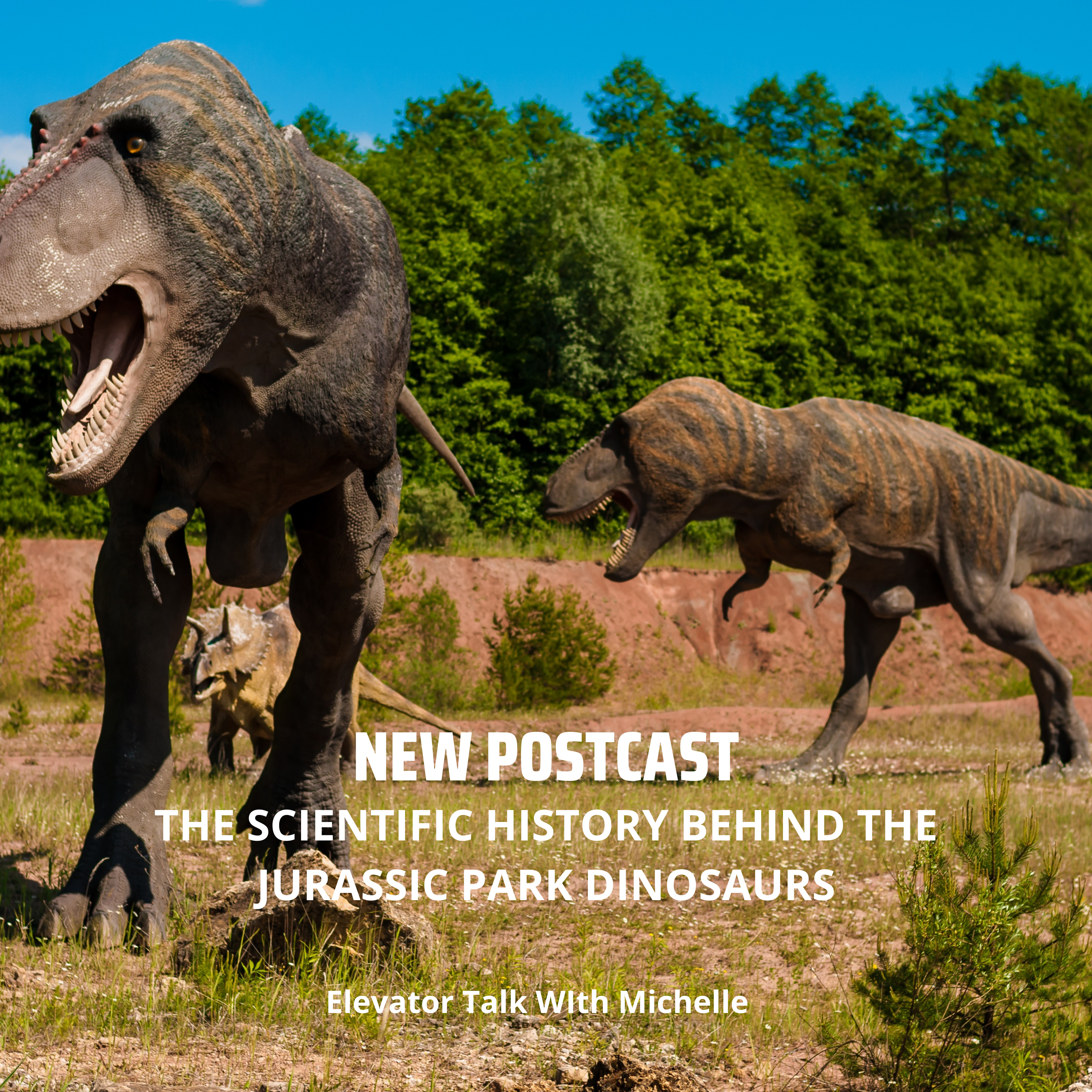The Scientific History Behind The Jurassic Park Dinosaurs

Hi and welcome back to With Michelle! The Jurassic Park and Jurassic World franchise, is entirely fictional, so you don\u2019t have to worry that dinosaurs are coming to get you. However, the story was in fact inspired by important changes in the scientific world. Over the course of the franchise, everything might not have been accurate, but the filmmakers have incorporated some expert advice on how to make the dinosaurs as realistic as possible.\n\nHere\u2019s how scientific discoveries really inspired the franchise. When Michael Crichton wrote the 1990 sci-fi novel that inspired the first Jurassic Park movie in 1993, he was inspired by paleontologist Jack Horner\u2019s 1988 book Digging Dinosaurs, on dinosaur behavior and the discoveries made in the prior decades. \u201cHe bases the character of Dr. Alan Grant on a guy digging up baby dinosaurs in Montana at a place called Egg Hill.\n\nWhat Jurassic Park Gets Right About Dinosaurs: Carrano gave Jurassic Park high marks for the basics of the dinosaurs that show up in the franchise. \u201cThe franchise gets one very important thing right: Dinosaurs were once active, living things that were as successful on land as any animal before or since,\u201d he added.\n\nWhat Jurassic Park Gets Wrong About Dinosaurs: Now while the franchise has helped spread the word on some truths about dinosaurs, it has also introduced new misconceptions. In particular, one question that paleontologists didn\u2019t often have to field before Jurassic Park is whether dinosaur DNA exists and if dinosaurs can be cloned. \u201cThe oldest DNA that has been recovered from fossil record is well under a million years old, and these non-bird dinosaurs all died out 65 million years ago. Because [DNA] is a fragile molecule, it\u2019s not thought to have survived as far back as the Jurassic period.\u201d (Horner explains that, in 1993, when the first movie was made, scientists didn\u2019t yet know that they wouldn\u2019t be able to find dinosaur DNA, adding that he and a grad student tried.) The films tend to be off on the sizes of some dinosaurs, and filmmakers have invented new functions for some of their physical attributes.\n\nThe Velociraptor is one of the dinosaurs that the movie depicts as larger than it would have been in real life. (Carrano says it should be just about three feet tall.). Ankylosaurus is shown as having a club on it\u2019s tail for self-defense, but that was probably for getting the female dinosaurs attention, says Horner, and the Mosasaurus in Jurassic World (2015) is depicted as about the size of a whale when it would have been half that length, according to Barta. The opposite is the case with the Dilophosaurus, \u201cwhich would have been larger than it was portrayed in the movie. This depiction is the most inaccurate dinosaur in the movies,\u201d says Barta. \u201cWe wouldn\u2019t be able to have fossilized evidence of a poison gland or a bony structure near the throat for the support of anything like a frill. We have no evidence for either of those things in actual fossils.\u201d\nThose who find the Tyrannosaurus (or the T-Rex) terrifying will be relieved to know that it wouldn\u2019t have able to run because it didn\u2019t have large enough muscles, and that the dinosaurs probably sounded less scary as well. Scientists believe they grunted and hissed but probably didn\u2019t really roar.\n\n\n\n--- \n\nSupport this podcast: https://podcasters.spotify.com/pod/show/michelle4466/support